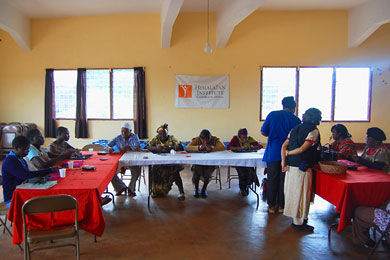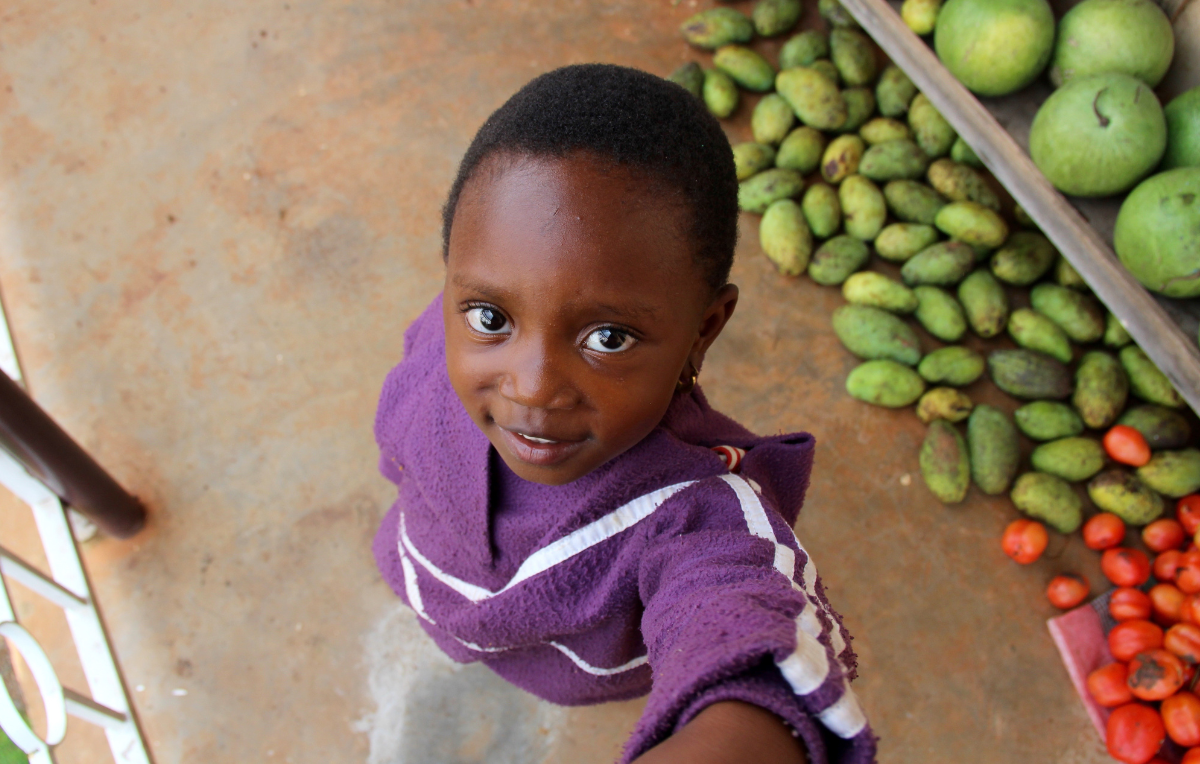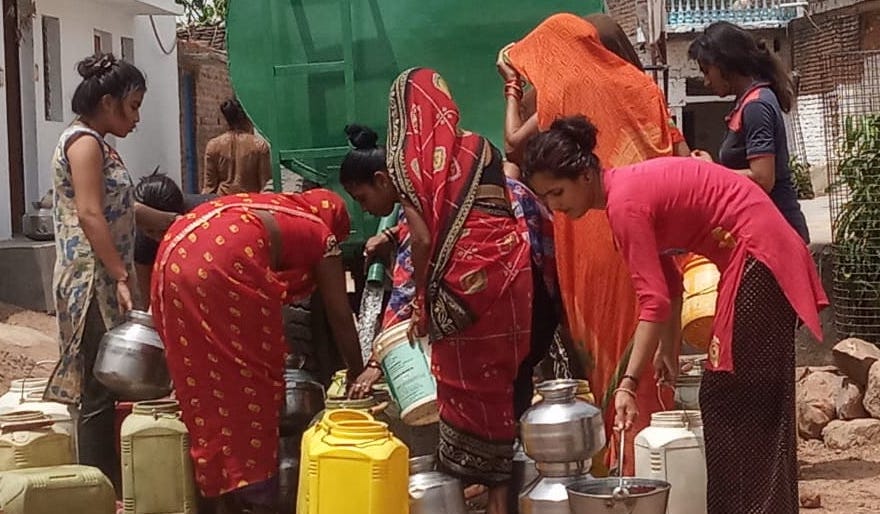Within the last month, the main hall at Himalayan Institute Cameroon (HIC) has served as a classroom, a yoga studio, a lecture hall, and a community meeting place.
On Saturday October 4, the Sacred Link Jewelry program added to the list by holding a public jewelry-making workshop. Eighteen attendees were taught how to design jewelry using basic tools and were given a range of materials to select from, all as part of an event billed “Make Your Own Jewelry Day.”
For Sacred Link Jewelry technician Shey Felicitas Wongibe, it was a return to her roots.
In this same room, in August 2007, Shey Wongibe enrolled as a student in HIC’s three-month Sacred Link Jewelry training course. There, she and six other local applicants learned the technical and business skills needed to become self-employed by creating jewelry out of natural materials.
Now, in addition to running the campus Sacred Link Jewelry program, Shey Wongibe designs and sells her own jewelry. Presently though, she’s enjoying the chance to pass on her knowledge.
“Sacred Link Jewelry means jewelry that comes from the heart,” she explains to the group. “It means jewelry that combines nature with beauty, and it goes the whole world around because there is not a single area in the world where people don’t talk of jewelry or of beauty.”
Shey Wongibe demonstrated how to use three tools—round nose pliers, chain nose pliers and a side cutter—to stop, crimp, and clasp the cord.
One secondary school student from Nkavikeng Village said, “I’ve learned a lot about the jewelry, and it is actually very useful for me because in school I do fashion design and textiles, and the jewelry can really benefit it. I’ve made this necklace but I want to learn more still.”
In Kumbo, lack of vocational training is a major factor behind the high unemployment rate.
After the workshop, Shey Wongibe said, “An event like this is so important because normally we do not have such opportunities in Cameroon. It is not easy to organize a course for three or four months and to find people who will be able to pay. But when you start initially with people who come with a little money and learn the essentials in three or four hours, then many people will be able to come and learn to produce jewelry. Even if they will not be as advanced as a technician, they can learn a valuable skill.”
Shey Wongibe plans to repeat the event in November.








